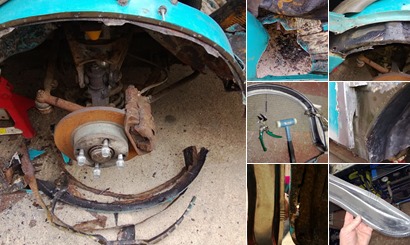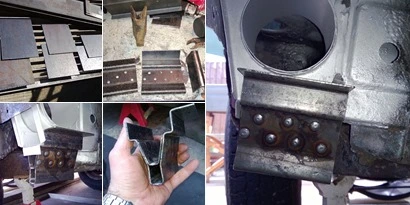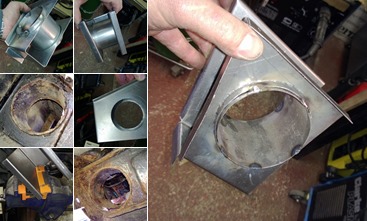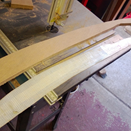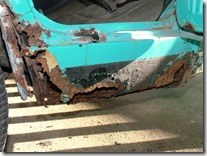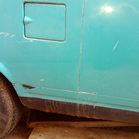Progress has been steady over the last few weeks, I’ve had a lot of other stuff on my plate. I’ve refurbished a bicycle for my 5 year old Nephew, work has been chaotic and we’re in building work limbo, awaiting the commencement of work on an extension but I’ve been plodding on with Pandora.
The front wheel arches were badly bodged with filler. It was difficult to discern exactly what shape they were supposed to be, so rather than attempt to make them I ordered some from Italy. They were NOT cheap but it was a supplier that I’d used before so I was reasonably confident that they would actually show up! Most of these old stock panels have been on the shelf so long that they’re scratched and beginning to show signs of dry rust. So they went straight into a bin of caustic which fetches the paint of in no time, then into a bin of Bilt Hamber Deox-C. The stuff rocks! The black passivated panel then coated with Zinc galv paint which provides pretty good Long term protection (but Weld-Thru my arse!).
Behind the arch and under the tub is an intermediate panel that forms a box section with the new arch panel…or at least there should be, there wasn’t much left. So with the new Tank Roll bead roller dies I recently purchased I tried my hand at making a new one, similar if not exactly matching what I thought the original looked like. It was pretty successful for a first attempt and easily good enough. The rearmost section of this panel is a little more complex in shape and I made this separately using an FSP. I clamped the new arch to the new sill I made earlier and fitted the intermediary arch panel to the assembly. The tank rolls were quite frankly obscenely expensive for Made in China crap but they’ve worked well.
I’ve started to strip all the underseal and paint from the tub and there are some repairs needed there. I went nuts with the plasma cutter and spot weld cutter to strip off the old arch and badly repaired sections of floor and chassis and things are looking hopeful for reassembly before the builder arrives! I’d desperately like to see some progress, as forever cutting more rust off it gets pretty demoralising. Here’s hoping.
